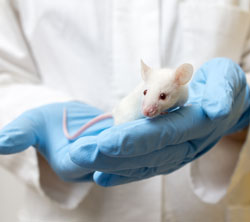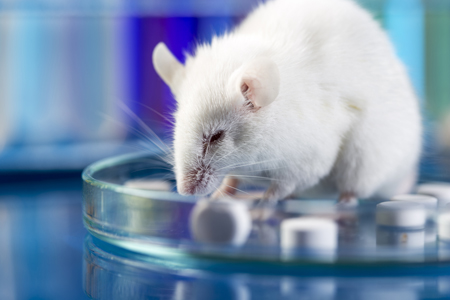Statins Reduce Drug-Craving in Mice
 Statins are drugs that are typically used to lower cholesterol. Recent research on the drugs has focused on their effects on the brain.
Statins are drugs that are typically used to lower cholesterol. Recent research on the drugs has focused on their effects on the brain.
In 2015 Claudia Chauvet and colleagues reported in the journal Neuropsychopharmacology that the brain-penetrating statins simvastatin and Atorvastatin reduced cocaine seeking behaviors in mice that were taught to self-administer cocaine and then were denied access to it for 21 days compared to pravastatin, a statin that does not penetrate the brain as thoroughly. The researchers found that the brain-penetrating statins also reduced nicotine seeking, but not food reward seeking. The statins also worked in mice that had stopped seeking cocaine but relapsed due to stress, allowing them to abstain from cocaine seeking again.
Statins are considered a very safe treatment in humans. The ability of statins to prevent relapse to addictions in mice may mean that one day they could be used to treat addictions in people as well. A review article by Cassie Redlich and colleagues in the journal BMC Psychiatry in 2014 indicated that statins may reduce recurrence of depression in people. The researchers found that simvastatin had a protective effect while Atorvastatin was associated with increased risk of depression, so the choice of statins may be important for both depression and addiction.
The Combination of N-Acetylcysteine and Varenicline Reduces Nicotine Addiction in Rats
Nicotine addiction is highly cue-dependent, meaning that certain situations or places will make smokers crave a cigarette even if they’re trying to quit. Researchers working with rodents are exploring a combination of treatments that address different behavioral and neurobiological mechanisms to reduce nicotine addiction. In a recent study by Cassandra Gipson-Reichardt and colleagues, N-acetylcysteine reduced cue-induced nicotine seeking, while varenicline reduced nicotine self-administration. Together the drugs worked better to reduce nicotine relapse than either drug on its own.
In the study, rats were trained to self-administer nicotine (with 0.02mg/kg infusions), and cues were used to reinstate nicotine seeking. The rats were treated with 10 and 30 mg/kg injections of NAC and 1 and 3 mg/kg injections of varenicline.
Relapse is associated with rapid synaptic potentiation in the reward area of the brain, the nucleus accumbens. In addition to the positive behavioral changes noted, NAC also inhibited this synaptic potentiation, limiting rapid changes in the size of spines on dendrites and reducing the ratio of AMPA to NMDA (two different compounds that mimic glutamate) in the core of the nucleus accumbens.
Editor’s Note: The combination of NAC and varenicline has not yet been studied in humans, but because both compounds are effective in reducing smoking, it is likely that this animal research on nicotine will be replicated in humans who are addicted to the nicotine in cigarettes.
N-acetylcysteine Decreases Smoking
It appears that the nutritional supplement n-acetylcysteine (NAC) may be useful for people who want to quit smoking. Researcher Eduardo S. T. Prado et al. reported that compared to placebo, NAC decreased the number of cigarettes a patient smoked per day and the amount of carbon monoxide they exhaled. Participants in the study took 1,500mg of NAC twice a day.
Editor’s Note: It looks as though NAC is effective in most addictions, including gambling, cocaine, heroin, marijuana, alcohol, and now smoking. Since it also helps depressed mood and anxiety in patients with bipolar illness (a finding first reported by researcher Michael Berk et al. in 2008), and can improve trichotillomania and obsessive compulsive disorder (OCD), it could be an important adjunctive treatment for many patients with bipolar illness who also suffer from many of these comorbidities. The usual dose in most of these studies was 500mg twice a day for one week, then 1,000mg twice a day thereafter, as opposed to the doses of 1,500mg twice a day that were used in the smoking study.



